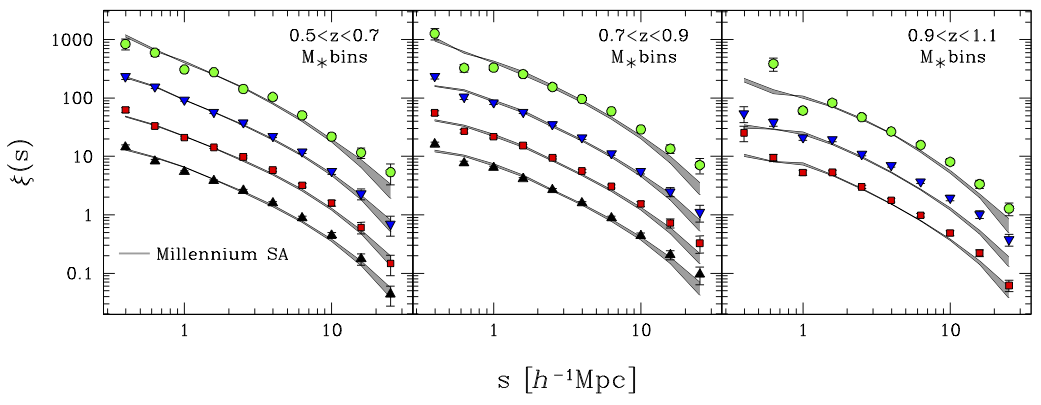Our model for dark matter is incredibly successful despite its simplicity. But things get complicated when we try to understand galaxies, and actually the entire baryonic component of the Universe poses significant problems for theories of structure formation. A step forward in understanding how galaxies relate to dark matter can be made by looking at the clustering properties of galaxies.
One statistical tool is the two-point correlation function which tells us the likelihood of finding a pair of galaxies with a given separation. This statistic is well understood and can be predicted for dark matter from a theoretical basis and numerical simulations, but it is not so simple for galaxies. The measurements are now telling us how precisely galaxies form at the peaks of the dark matter density and how the process may depend on the luminosity and mass of the galaxy.
The VIPERS survey is making these measurements with unprecedented precision at an epoch when the Universe was half its present age.

The statistical correlation of galaxies with separation (s) as a function of stellar mass and redshift. The grey shaded region represents a model prediction of how galaxies form around dark matter density peaks.
Further reading
- The VIMOS Public Extragalactic Redshift Survey (VIPERS). Luminosity and stellar mass dependence of galaxy clustering at 0.5<z<1.1 Marulli, F. and the VIPERS team. Submitted to A&A. Download available.
